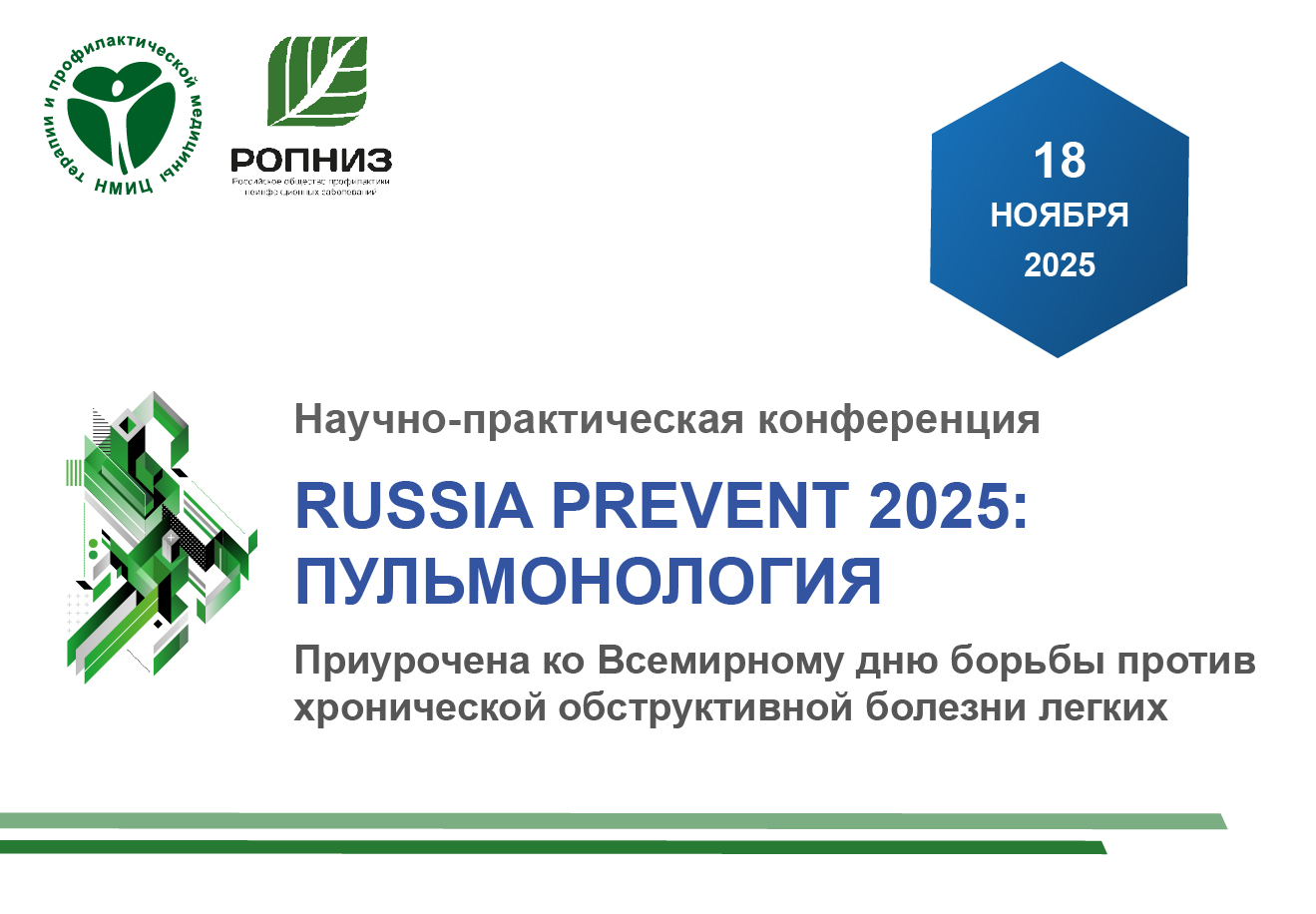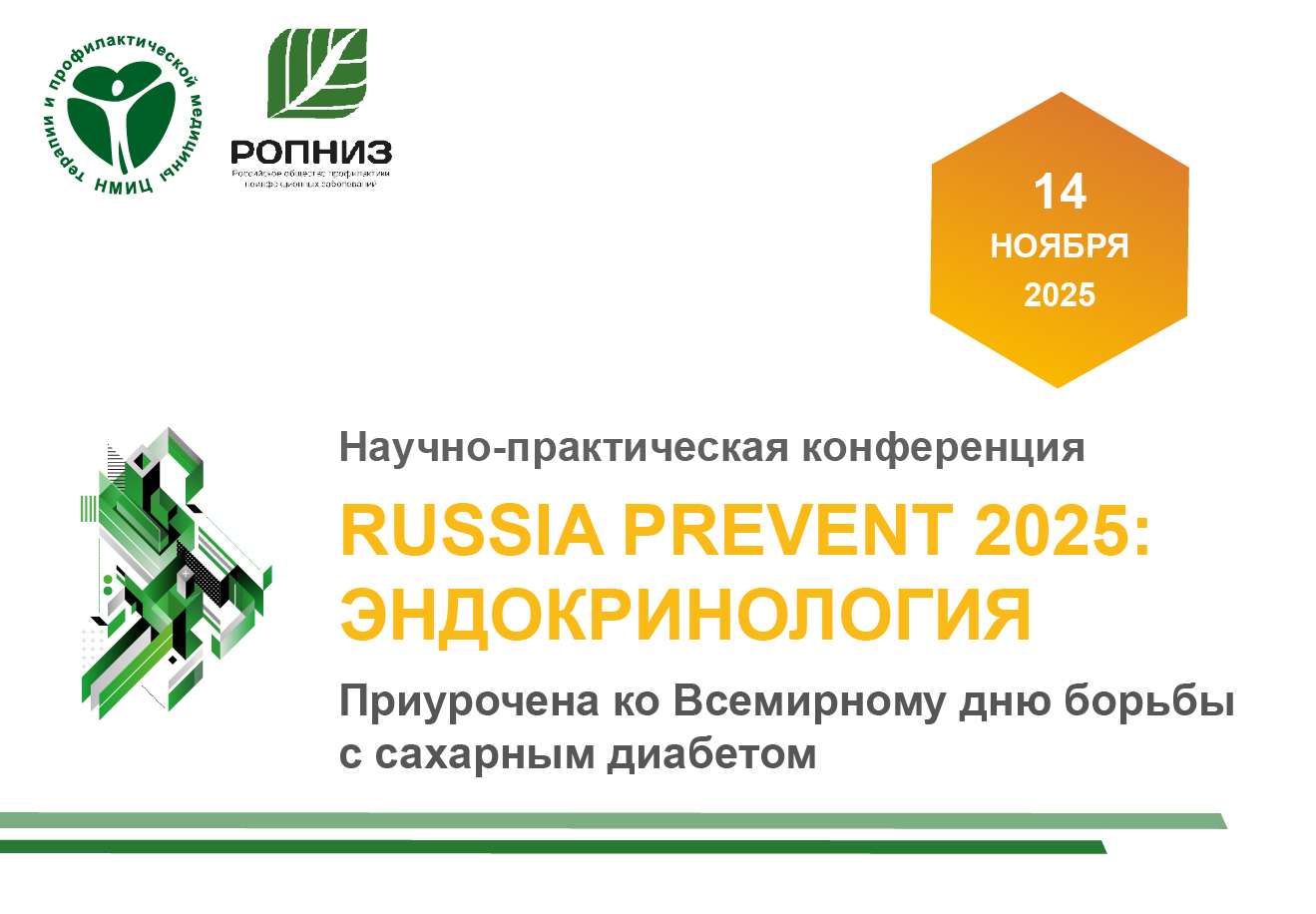CLINICAL AND ECONOMICAL RATIONALES OF CARDIOVASCULAR RISK EVALUATION AT WORKPLACE
https://doi.org/10.20996/1819-6446-2009-5-3-36-41
Abstract
Aim. To study clinical and economical rationales for cardiovascular risk evaluation at workplace (on example of the personnel of engineering research institute).
Material and methods. Complex preventive screening with evaluation of arterial hypertension (HT) prevalence, cardiovascular risk level and requirement for risk factors correction is performed. Economical rationales for preventive screening (with estimation of the total costs, costs for one studied person and costs for revealing of one person needed in preventive actions) are also estimated.
Results. Preventive screening in the organized collective found new HT cases (12,2%), high and very high cardiovascular risk (58,6%). The desire for risk factors correction is found in 13,0-59,0% of workers. The total costs for preventive screening of 468 persons were 174413 rubles in 3,5 months. Costs for examination of one worker were 561,7 rubles. Costs for detecting of one worker requiring preventive actions were from 635,6 to 3077,4 rubles
Conclusion. There are rationales for preventive screening of cardiovascular risk and desire to correct it at the workplace.
About the Authors
A. V. KontsevayaRussian Federation
Petroverigsky per. 10, Moscow, 101990
A. M. Kalinina
Russian Federation
Petroverigsky per. 10, Moscow, 101990
Yu. M. Pozdnyakov
Russian Federation
Petroverigsky per. 10, Moscow, 101990
S. V. Belonosova
Russian Federation
Petroverigsky per. 10, Moscow, 101990
M. B. Khudyakov
Russian Federation
Petroverigsky per. 10, Moscow, 101990
References
1. Bankhead C.R., Brett J., Bukach C. et al. The impact of screening on future health-promoting behaviours and health beliefs: systemic review. Health Technol Assess 2003;7(42):1-92.
2. Aubin M., Godin G., Vezina L., Maziade J., Desharnais R. Hypercholesterolemia screening. Does knowledge of blood cholesterol level affect dietary fat intake? Can Fam Physician 1998;44:1289-97.
3. Kolbe-Alexander T.L., Buckmaster C., Nossel C. et al. Chronic disease risk factors, healthy days and medical claims in South African employees presenting for health risk screening. BMC Public Health 2008;8:228.
4. Бритов А.Н. Профилактика артериальной гипертонии на популяционном уровне: возможности и актуальные задачи. РМЖ 1997;5(9): 571-6.
5. Елисеева Н.А. Результаты первичной и вторичной профилактики артериальной гипертонии у женщин на одном из промышленных предприятий г. Москвы. Кардиология 1982;22(3):69-73.
6. Mark D.B., Shaw L.J., Lauer M.S., et al. Task 34th Bethesda Conference: Task force #5--Is atherosclerosis imaging cost effective? J Am Coll Cardiol 2003;41(11):1906-17.
7. Nyström L., Andersson I., Bjurstam N. et al. Long-term effects of mammography screening: updated overview of the Swedish randomised trials. Lancet 2002;359(9310):909–19.
8. Miettinen O.S., Henschke C.I., Pasmantier M.W. et al. Mammographic screening: no reliable supporting evidence? Lancet 2002;359(9304):404–5.
9. Field K., Thorogood M., Silagy C. et al. Strategies for reducing coronary risk factors in primary care: which is most cost effective? BMJ 1995;310(6987):1109-12.
10. Nielsen M., Kristensen T., Smith-Hansen L. The Intervention Project on Absence and Well-being (IPAW): Design and results from the baseline of a 5- year study. Work & Stress 2002;16(3):191-206.
11. Michie S., Wren B., Williams S. Reducing absenteeism in hospital cleaning staff: pilot of a theory based intervention. Occup Environ Med 2004;61(4):345-9.
12. Munz D., Kohler J., Greenberg C. Effectiveness of a comprehensive worksite management program: combining organizational and individual interventions. Int J Stress Manag 2001;8(1):49-62.
13. Langham S., Thorogood M., Normand C. et al. Costs and cost effectiveness of health checks conducted by nurses in primary care: the Oxcheck study. BMJ 1996;312(7041):1265-8.
14. Cairns J., Shackley P. Sometimes sensitive, seldom specific: a review of the economics of screening. Health Economics 1993;2(1):43-53.
15. Swancutt D., Hobbs R., Fitzmaurice D. et al. A randomised controlled trial and cost effectiveness study of systematic screening (targeted and total population screening) versus routine practice for the detection of atrial fibrillation in the over 65s: (SAFE) [ISRCTN19633732]. BMC Cardiovasc Disord 2004;4:12.
16. Рекомендации Российского медицинского общества по артериальной гипертонии и Всероссийского научного общества кардиологов. Диагностика и лечение артериальной гипертонии. Кардиоваскулярная терапия и профилактика 2008; 7(6 приложение 2):3-32.
17. Калинина А.М., Концевая А.В., Омельяненко М.Г. и др. Оценка потребности в профилактической медицинской помощи в первичном звене здравоохранения г. Иваново. Профилактика заболеваний и укрепление здоровья 2007;(4):39-44.
18. Калинина А.М., Концевая А.В., Омельяненко М.Г. Оценка моделей профилактического поведения пациентов первичного звена здравоохранения в отношении факторов риска основных сердечно-сосудистых заболеваний. Профилактика заболеваний и укрепление здоровья 2008;(4):17-22.
19. Шальнова С.А., Баланова Ю.А., Константинов В.В., и др. Артериальная гипертония: распространенность, осведомленность, приём гипотензивных препаратов и эффективность лечения среди населения РФ. Российский кардиологический журнал 2006;(4):45–50.
20. Fitzgerald S.T., Gibbens S., Agnew J. Evaluation of referral completion after a workplace cholesterol screening program. Am J Prev Med 1991;7(6):335-40.
21. Chambers R. The effectiveness of lifestyle related health screening: a 2 year follow-up study of doctors and teachers. Fam Pract 1992;9(4):500-5.
22. Baer J.T. Improved plasma cholesterol levels in men after nutrition education program at the worksite. J Am Diet Assoc 1993;93(6):658-63.
23. Kristal A.R., Glanz K., Tilley B.C., Li S.H. Mediating factors in dietary change: understanding the impact of a worksite nutrition intervention. Health Educ Behav 2000;27(1):112–25.
24. Glasgow R.E., Terborg J.R., Hollis J.F. et al. Take Heart: results from the initial phase of work-site Wellness Program. Am J Public Health 1995;85(2):209–16.
25. Stoate H.G. Can health screening damage your health? J R Coll Gen Pract 1989;39(322):193-5.
Review
For citations:
Kontsevaya A.V., Kalinina A.M., Pozdnyakov Yu.M., Belonosova S.V., Khudyakov M.B. CLINICAL AND ECONOMICAL RATIONALES OF CARDIOVASCULAR RISK EVALUATION AT WORKPLACE. Rational Pharmacotherapy in Cardiology. 2009;5(3):36-41. (In Russ.) https://doi.org/10.20996/1819-6446-2009-5-3-36-41















































